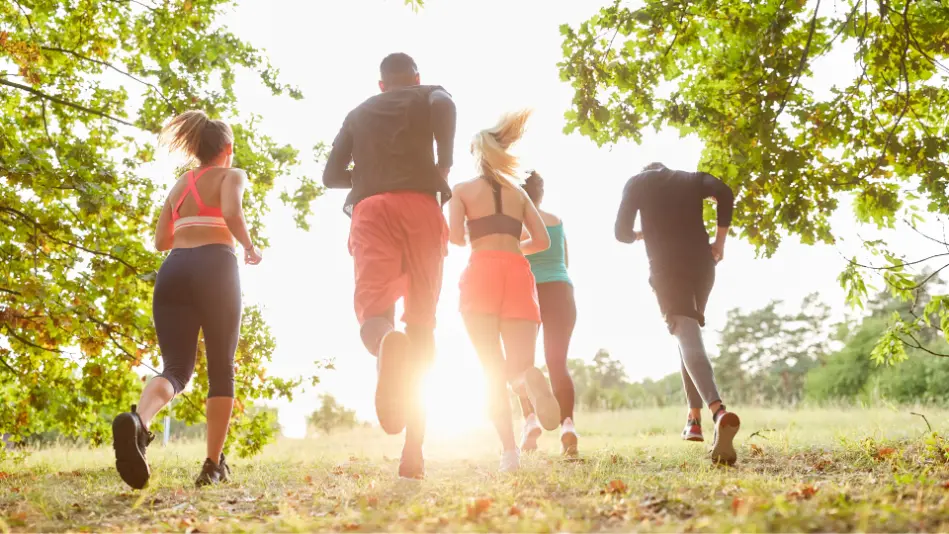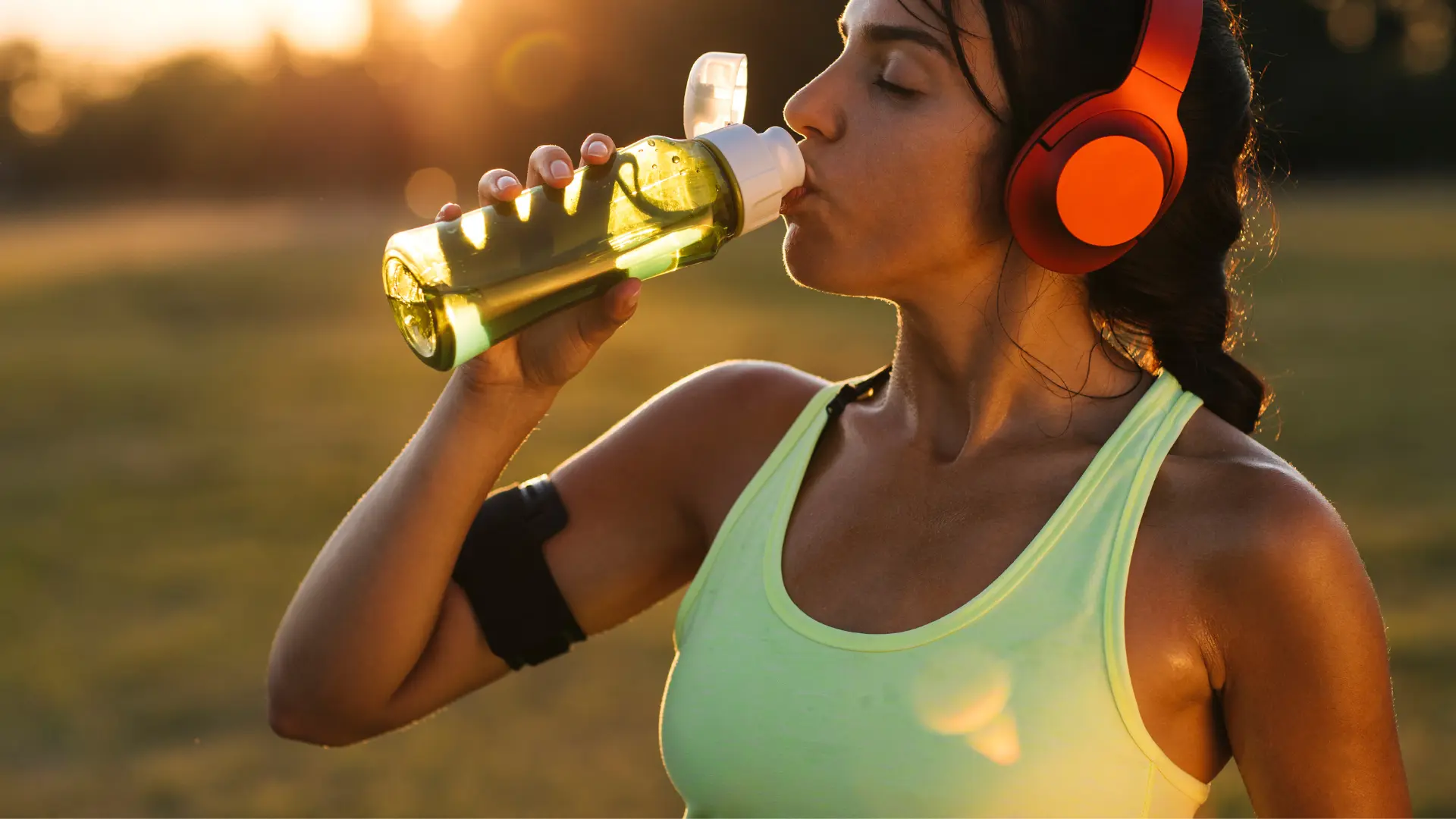Doing sport with aches and pains is possible and can even be beneficial, provided you adapt your physical activity intelligently. But be careful: more pain doesn't mean more muscle!
Post-training muscle soreness sometimes makes us doubt our ability to perform or recover. Yet recent studies show that not only is it possible to train with soreness, but that it can even speed up recovery, provided we don't confuse exertion with excessive muscle destruction.
What exactly is muscle soreness?
Before we talk about training with aches and pains, let's take a look at this phenomenon known as "Delayed Onset Muscle Soreness"(DOMS).
Sore muscles appear 24 to 48 hours after sporting activity and, contrary to popular belief, are not linked to lactate secretion during physical effort.
These are actually micro-lesions of the muscle fibers. The time it takes for a muscle to recover depends on the athlete, the intensity and duration of the sports session, and his or her lifestyle during the recovery phase.
🔬 Beware of confusing lactate and muscle soreness!
For a long time, it was believed that lactic acid was responsible for muscle soreness. It's a mistake that persists to this day!
- lactate (not lactic acid) is a natural product of energy metabolism;
- it is rapidly eliminated after exercise and serves as fuel for other cells.
Soreness is solely due to muscle micro-lesions caused by eccentric contractions and the ensuing inflammatory process.
How do these micro-lesions form? Mainly during eccentric work, i.e. when the muscle lengthens while contracting, generally to slow down a movement.
For example, when running downhill, your quadriceps actively brake the descent, creating these micro-traumas.
Eccentric exercises cause more micro-tears in the muscle. That said, concentric contractions can also cause soreness if the effort is unusual or very intense, but in general their impact is less.
If the nuance isn't perfectly clear to you, here's a little chart:
| Muscle group | Concentric effort | Eccentric force |
|---|---|---|
| Biceps brachii | Biceps curl (ascent phase) | Biceps curl (controlled descent phase) |
| Triceps | Pulley extension (push) | Pulley extension (controlled return) |
| Quadriceps | Squat (ascent phase) | Squat (slow descent) |
| Hamstrings | Leg curl (active contraction) | Leg curl (descent phase) |
| Chest | Bench press (push-up) | Bench press (controlled descent) |
| Back (large dorsal) | Pull-ups (ascent phase) | Pull-ups (controlled descent) |
| Anterior deltoids | Military development (thrust) | Military bench press (slow descent) |
| Calves | Tiptoeing (uphill) | Heel descent (controlled phase) |
| Abs | Crunch (active contraction) | Reverse crunch (controlled descent) |
| Buttocks | Hip thrust | Hip thrust (descent phase) |
| Adductor muscles | Machine adduction (contraction) | Adduction (slow, controlled return) |
| Abductors | Machine abduction (contraction) | Abduction (return phase) |
| Lateral shoulders | Side elevation (uphill) | Lateral elevation (slow descent) |
| Posterior shoulders | Reverse fly (contraction) | Reverse fly (controlled descent phase) |
| Forearm | Wrist flexion (active contraction) | Wrist flexion (controlled descent) |
| Obliques | Rotation with cable (active contraction) | Negative rotation (controlled return) |
| Backstroke (rowing) | Rowing at the bar (active pull) | Rowing at the bar (descent phase) |
| Chest (variant) | Pec Deck (contraction) | Pec Deck (slow return) |
| Quadriceps (variant) | Forward lunge (ascent phase) | Forward lunge (controlled descent) |
| Hamstrings (variant) | Straight-leg deadlift (pull-up) | Straight-leg deadlift (controlled descent) |
How does muscle rebuilding work?
- Muscle fiber micro-injury: during training, especially with heavy loads or eccentric movements (muscular braking), muscle fibers undergo micro-tears which cause the pain associated with muscle soreness.
- Inflammatory reaction and repair: the body triggers an inflammatory reaction to repair this damage. This leads to increased blood flow and an influx of essential nutrients (proteins, amino acids, etc.).
- Muscle protein synthesis: the body rebuilds damaged fibers by adding more contractile proteins (actin and myosin). This thickens the fibers and improves their ability to generate force.
- Muscular hypertrophy: with regular repetition of this cycle (training + recovery), muscles gradually become thicker and stronger to better withstand future demands.
More damage doesn't mean more muscle!
An excess of micro-injuries can slow recovery and prevent frequent training, thus slowing progress.
A diet insufficient in protein and calories can limit the body's ability to rebuild muscle efficiently. We come back to this in our feature on protein deficiency.
Muscle repair therefore implies a thicker reconstruction of the fibers, but it must be progressive and well dosed. Muscle growth does not depend solely on muscle soreness, but rather on progressive overload, nutrition and recovery.
Let's take a look at how sport can influence muscle pain.

What effect does sport have on aches and pains?
What are the benefits of active recovery?
Research shows that active recovery can help the muscle repair process by :
- improved blood flow to sore muscles;
- faster elimination of metabolic waste ;
- Reduced sensation of stiffness;
- optimized transport of nutrients needed for muscle rebuilding.
A 2018 systematic review published in Frontiers in Physiology1 takes stock of studies assessing the impact of recovery techniques on delayed-onset soreness (DOMS), perceived fatigue, muscle damage and inflammatory markers after exercise.
Changes in blood concentrations of muscle damage markers such as creatine kinase and inflammatory biomarkers (C-reactive protein and interleukin-6) observed after exercise can be used to assess muscle recovery.
According to this analysis, active recovery has a positive effect on muscle recovery only over a shortpost-exerciseperiod, with a similar effect to contrast therapy (alternating hot and cold baths).
In short, moderate short-term activity stimulates blood circulation and speeds up muscle repair, but over-intense training could create new micro-injuries and delay the recovery process. It's up to the athlete to find the right balance!
Active recovery for athletes in the mass gain phase can accelerate repair without compromising muscle gains if combined with sufficient protein intake!
What about other recovery techniques?
A 2021 review published in the journal Physical Therapy inSports2examined 121 studies evaluating the impact of different recovery techniques on muscle soreness (DOMS).
Here are the results of techniques that have a positive impact on muscle recovery:
| Recovery technique | Efficiency (p-value) | Variability (I²) |
|---|---|---|
| Massage | p<0,00001 | 94% |
| Phototherapy | p=0,0001 | 95% |
| Active financial year | p=0,0004 | 93% |
| Vibration | p=0,004 | 96% |
| Cryotherapy | p=0,002 | 100% |
| Contrast techniques | p=0,002 | 60% |
| Compression | p=0,002 | 93% |
| Ultrasound | p=0,02 | 97% |
💡 The closer the p-value is to 0, the more statistically reliable the result. High I² indicates high variability between studies.
What does this mean in concrete terms?
Allthese techniques appear to help reduce muscle soreness, with massage being particularly effective. However, the overall quality of the evidence is considered "low", meaning that these results should be interpreted with caution, and further studies are needed to confirm these effects.
Remember: these techniques accelerate repair IF your body has the means to repair itself. Adequate protein intake is essential for muscle fiber repair!
Conversely, scientific data show no statistically significant effect for :
- kinesio-taping ;
- acupuncture;
- foam roller (massage roller) ;
- stretching ;
- electrostimulation ;
- magnetic therapy.
This does not mean that these techniques are totally useless (they may have other benefits), but simply that they have not demonstrated any real advantage over no treatment in relieving aches and pains.

How to optimize your recovery?
Muscle recovery is based on 3 basic principles: nutrition, hydration and sleep. Other techniques, such as active recovery or massage, can complement but not replace these fundamentals for repairing muscle micro-injuries, replenishing energy reserves and preventing the risk of injury.
Post-exercise nutrition must be particularly rich in protein to provide the resources needed to rebuild muscle fibres. Carbohydrates are also essential for replenishing energy reserves. Omega-3 fatty acids, found in certain oils and oily fish in particular, help reduce inflammation, while antioxidant vitamins and minerals support the immune system.
What about whey?
Whey proteins, or whey, are whey, are interesting for muscle recovery because they are rich in essential amino acids (BCAAs). When consumed after exercise, they stimulate muscle protein synthesis, help repair micro-injuries and build muscle mass.
On the other hand, certain foods can hinder recovery. Alcohol, for example, disrupts protein synthesis and sleep, while dehydrating the body. Ultra-processed foods, often rich in saturated fats and refined sugars, promote inflammation.
Sleep is a privileged time for recovery. It's during this phase that the body secretes the anabolic hormones essential for muscle rebuilding. Athletes should aim for 7 to 9 hours' sleep a day, or even more during periods of intense training. Chronic sleep deprivation can, on the contrary, increase muscle catabolism via cortisol production. In this respect, taking protein before sleep does not impair sleep and promotes nocturnal recovery.
Maintaining proper hydrationbefore, during and after exercise enables nutrients to be transported and metabolic waste to be eliminated, while compensating for water and electrolyte losses through perspiration.
Conclusion
Sore muscles do not prevent you from continuing your physical activity. Active recovery can even be beneficial, provided you adapt the intensity of your sports session.
Good recovery depends on quality sleep, adequate hydration and good nutrition. During the recovery phase, proteins in particular help repair damaged muscle fibers.
Bear in mind that everyone reacts differently to aches and pains. The most important thing is tolearn to listen to your body'ssignals and adapt your session accordingly!













